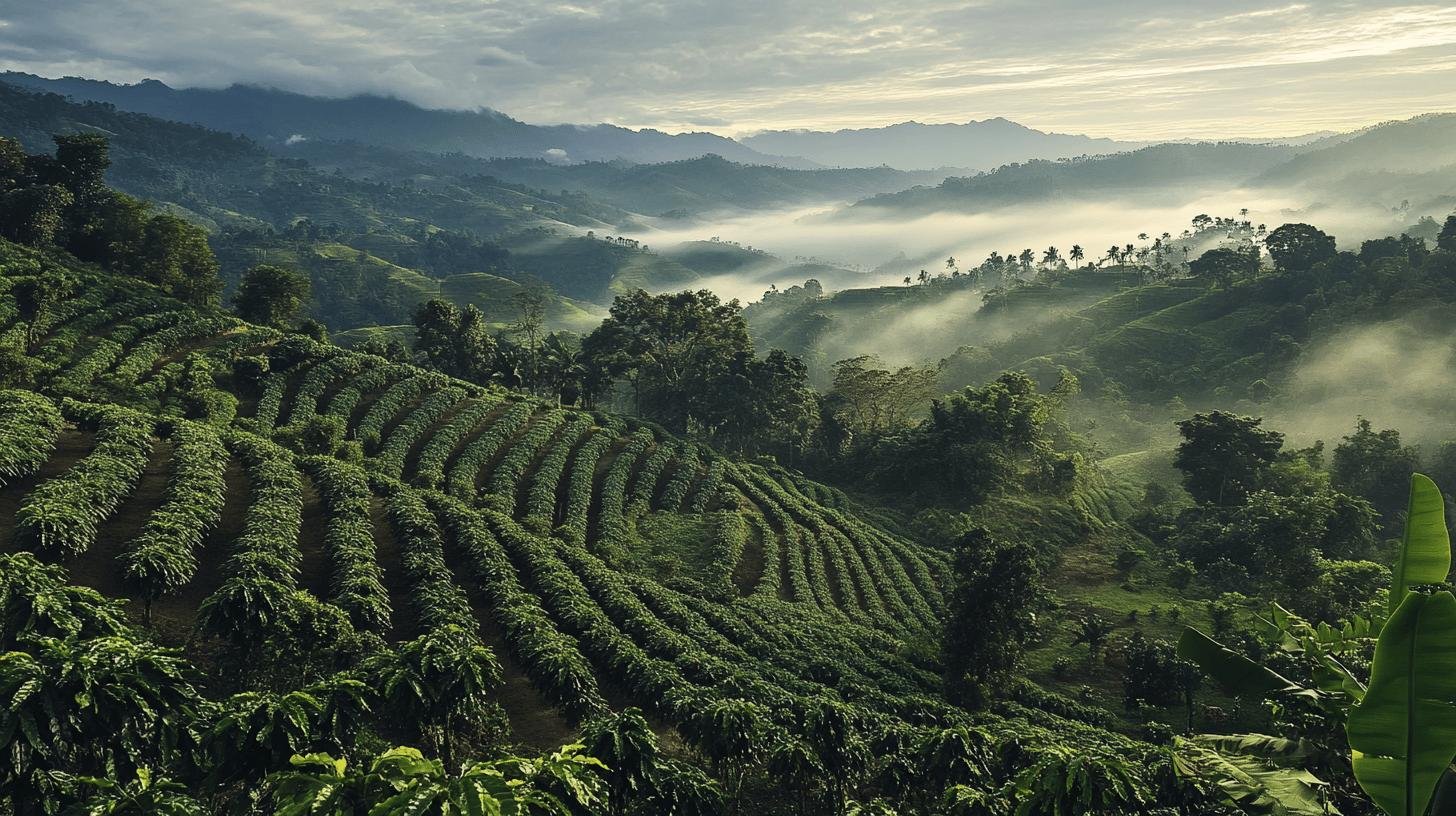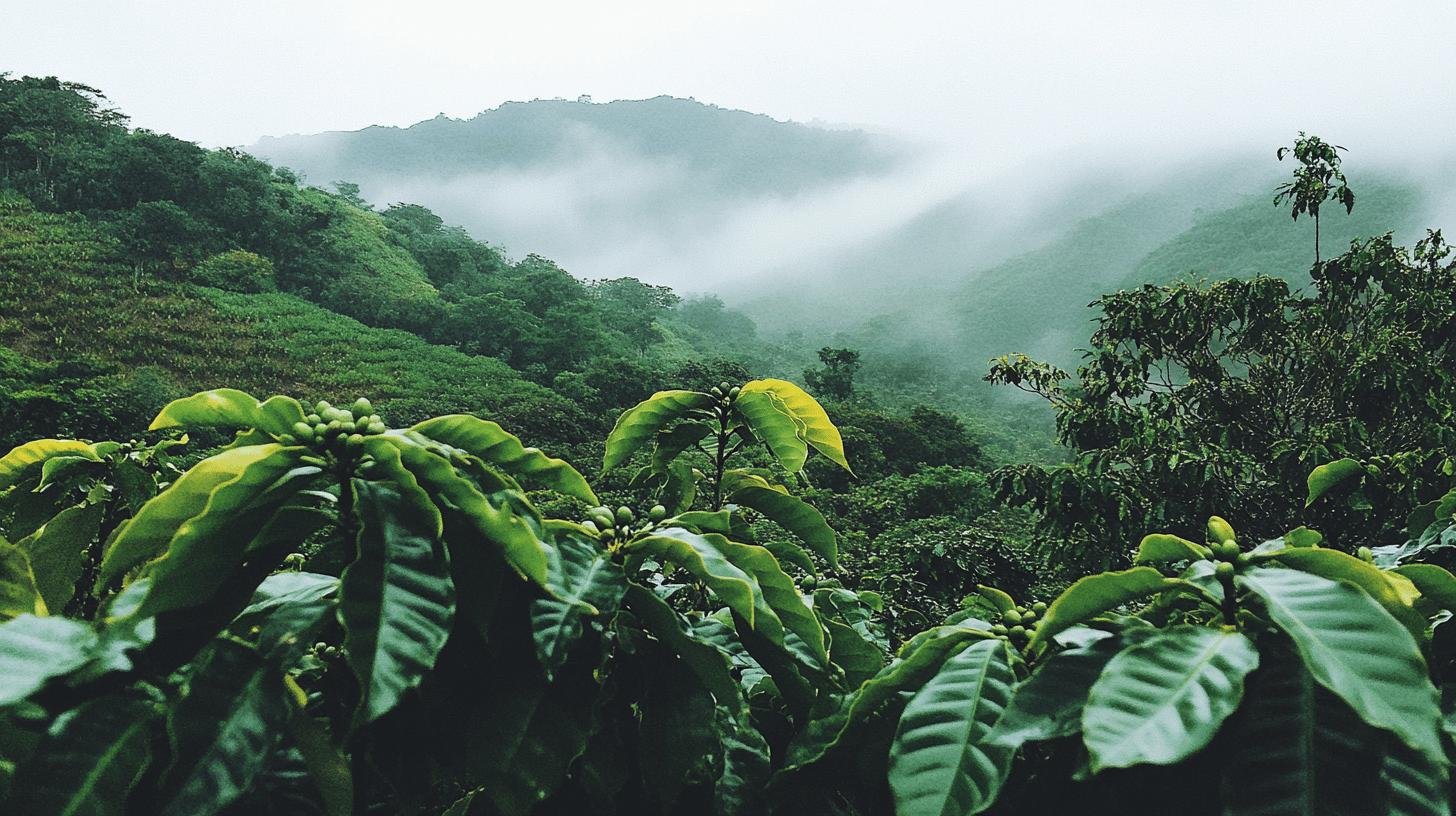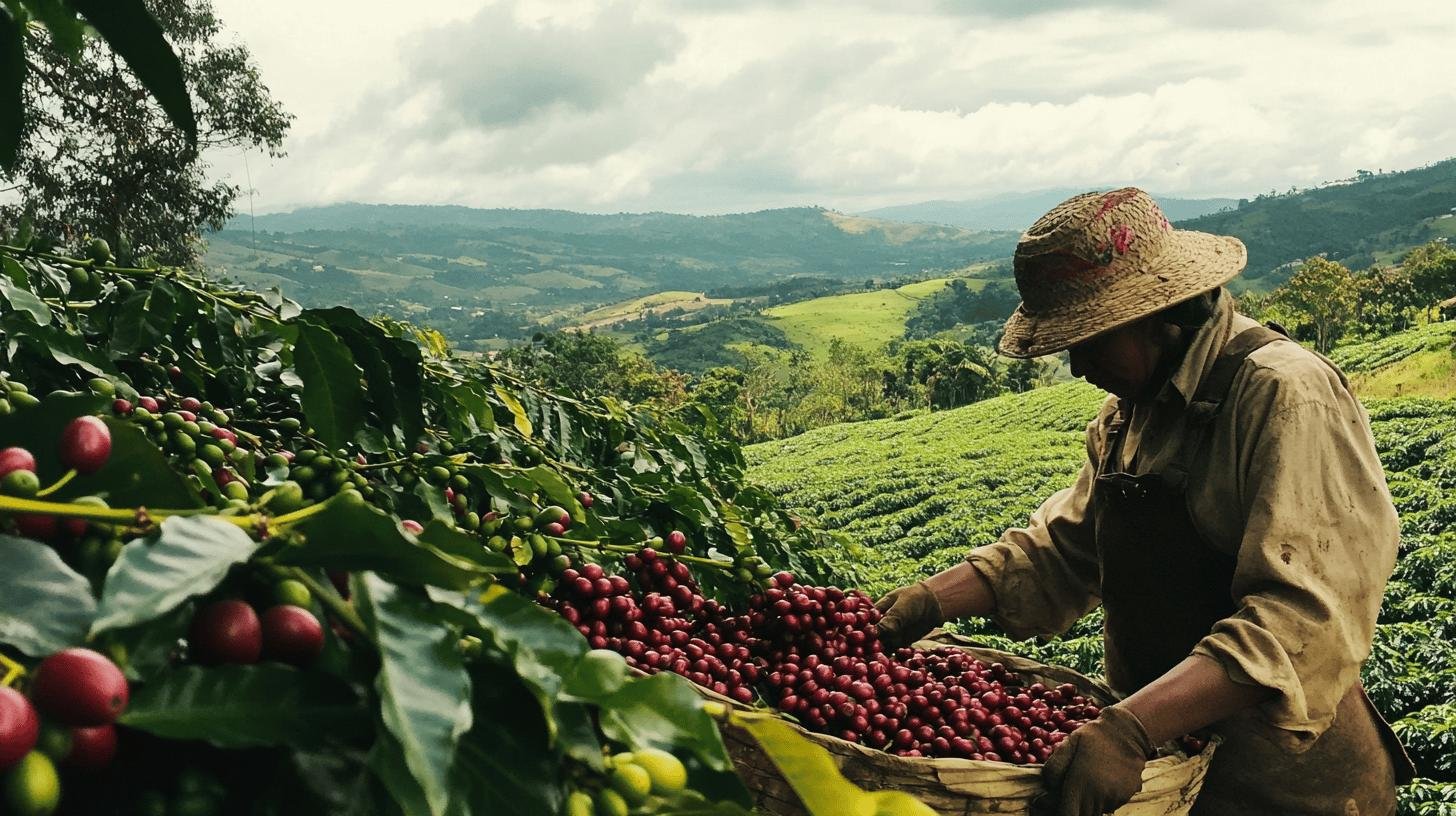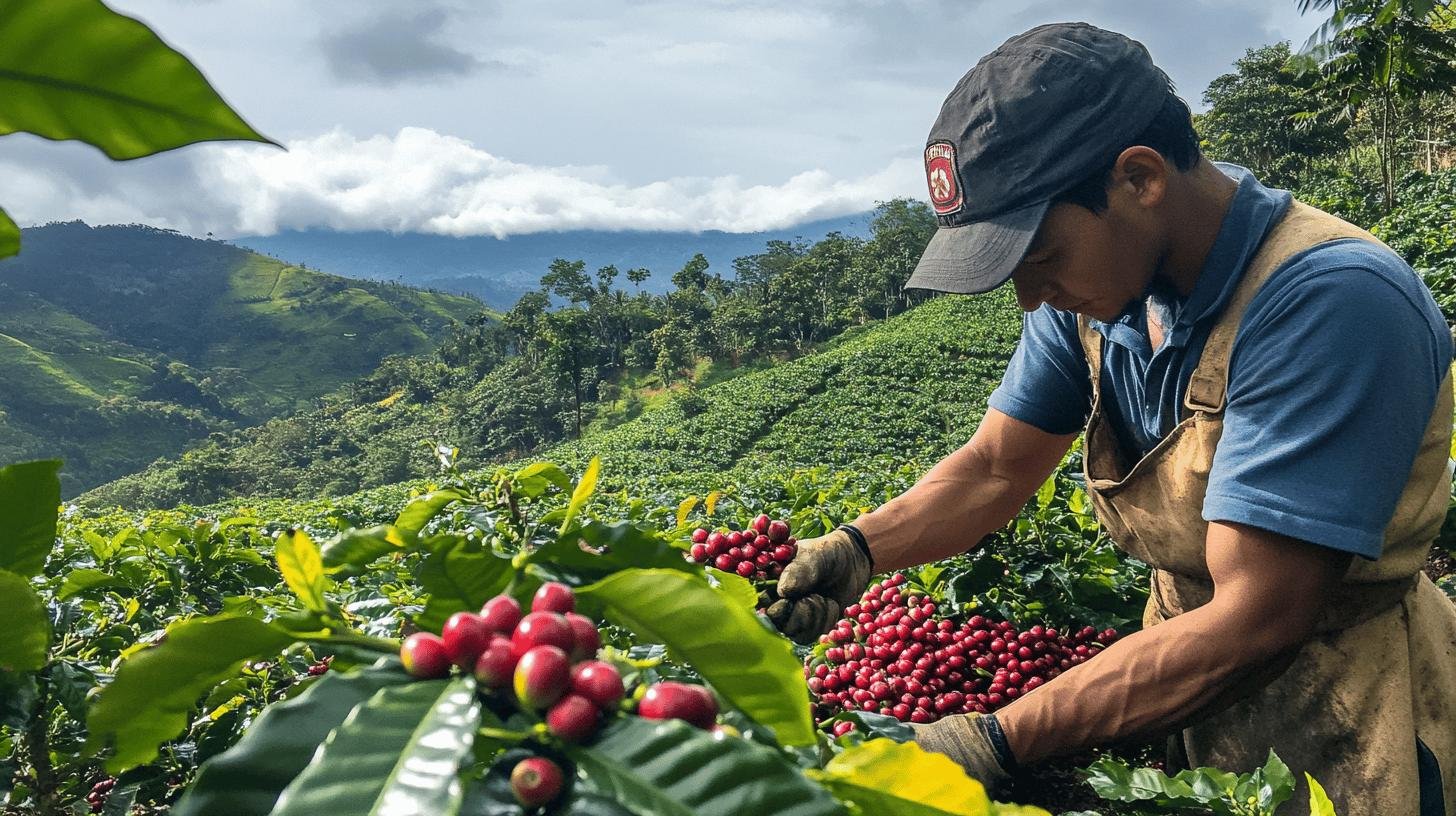What if the coffee you enjoy each morning has roots in a culture as rich as its flavor? From the legend of an Ethiopian goat herder named Kaldi to ancient Yemeni traders, the plant coffee beans come from is steeped in compelling history and mythology.
This blog explores the journey of coffee from its Ethiopian origins through its historical spread and cultural significance, shedding light on how these origins shape the coffee culture we cherish today. Dive in and discover the rich cultural origins behind your favorite brew.
Origins of Coffee Beans
The legend of Kaldi, an Ethiopian goat herder, marks the initial discovery of coffee. Kaldi noticed his goats became unusually energetic after eating red berries from a specific shrub. Curious, he tried the berries and experienced a similar energy boost. This discovery reached a local monastery, where monks used the berries to stay awake during long prayers. Over time, knowledge of these energizing berries spread, leading to the widespread use of coffee.
- Coffee beans were discovered in Ethiopia’s Kaffa region, which inspired the name “coffee.”
- The first recorded use of coffee as a drink was in Yemen in the 15th century.
- Coffee cultivation began on a large scale in Yemen.
- From Yemen, coffee spread to the Ottoman Empire and then to Europe.
- European colonists brought coffee plants to tropical regions worldwide, establishing global coffee production.
Major Coffee-Producing Regions

Most of the world’s coffee grows within the Bean Belt, an area around the equator between the Tropics of Capricorn and Cancer. This region provides the ideal climate for coffee cultivation, with consistent temperatures, ample rainfall, and rich soil conditions. The Bean Belt’s climate supports the growth of both Arabica and Robusta coffee varieties, offering a diverse range of flavors and qualities catering to different preferences.
Here’s a table showing the regions where plant coffee beans come from:
| Country |
Percentage of World Production |
Type of Coffee |
| Brazil |
40% |
Arabica & Robusta |
| Vietnam |
16% |
Robusta |
| Colombia |
8% |
Arabica |
| Ethiopia |
4% |
Arabica |
| Honduras |
3% |
Arabica |
Coffee Plant Characteristics and Lifecycle
Coffee plants are woody evergreens that can grow up to 10 meters tall in the wild. They have branches covered in dark green, waxy leaves that grow in pairs, essential for photosynthesis. The coffee plant produces red cherries containing two seeds, which are processed to make coffee. These cherries are not only visually striking but also crucial to the coffee production process.
- Germination: Coffee seeds are first planted in shaded nurseries where they germinate.
- Seedling Stage: After developing into young plants, they are transplanted to coffee farms.
- Growth: The plants grow, developing branches and leaves essential for photosynthesis.
- Flowering: After 3-4 years, the coffee plant produces white, fragrant flowers.
- Fruiting: The flowers give way to cherries, which mature over several months.
- Harvesting: The cherries are harvested when ripe, usually by hand.
Ideal Conditions for Growing Coffee Plants

Coffee plants thrive in specific climates, primarily within the Bean Belt. This region offers the ideal environment for coffee cultivation, with consistent temperatures and ample rainfall. Coffee plants require temperatures between 60-70°F (15-24°C) and annual rainfall of 60-100 inches (1,500-2,500 mm).
Well-drained, fertile soil rich in organic matter supports healthy coffee plants. The altitude at which coffee is grown also significantly affects its quality. Higher elevations, typically between 2,000 and 6,000 feet, produce denser and more flavorful beans.
Additionally, the increased exposure to sunlight enhances the photosynthesis process, resulting in beans with higher sugar content. This combination makes high-altitude coffee beans highly sought after for their superior taste and quality.
Types of Coffee: Arabica vs. Robusta
Arabica and Robusta are the two primary types of coffee beans, each offering distinct characteristics catering to different tastes and preferences. Arabica beans are renowned for their high-quality flavors and aromas, often described as complex and sweet. They were first discovered in the highlands of Ethiopia and thrive in higher altitudes and cooler climates, ranging from 18-23°C.
On the other hand, Robusta beans are predominantly grown in Africa, Vietnam, and Indonesia. These beans have lower acidity levels, resulting in a less sweet taste with more robust, earthy tones, sometimes even reminiscent of wood or burnt rubber.
Arabica coffee plants produce the majority of the world’s coffee due to their superior taste. These plants are more delicate and sensitive to their environment, requiring specific conditions to thrive.
In contrast, Robusta coffee plants are hardier and more resistant to pests and diseases, making them easier to cultivate in a wider range of environments. Robusta beans are characterized by their strong, bold flavor, often described as having a heavier body compared to Arabica.
Coffee Bean Cultivation and Harvesting

The process of growing coffee begins with planting seeds in shaded nurseries, where they are nurtured until they become young plants. These shaded environments protect the delicate seedlings from direct sunlight and harsh weather conditions, ensuring healthy growth.
Once the plants reach a robust stage, they are transplanted to coffee farms, often situated on hillsides to optimize sunlight and drainage. This strategic placement enhances the plants’ ability to thrive and produce high-quality coffee cherries.
Harvesting coffee beans is a meticulous process, often done by hand to ensure only the ripest cherries are picked. This method is especially crucial for high-quality Arabica beans, where precision in selecting ripe cherries directly impacts the flavor profile.
Hand-picking allows farmers to avoid unripe or overripe cherries, which can negatively affect the taste. This labor-intensive process underscores the dedication required to produce premium coffee, ensuring each bean is of the highest quality.
Processing Coffee Beans: From Cherry to Bean
Processing methods are crucial in transforming coffee cherries into the beans we brew. These methods significantly impact the flavor, aroma, and quality of the final product.
Understanding the various processing techniques can provide insight into the diverse profiles present in different coffee types and help consumers appreciate the nuances in their cup.
- Dry/Natural Process: The entire coffee cherry is dried in the sun, resulting in fruity and sweet flavors as the sugars in the fruit ferment.
- Wet/Washed Process: Water is used to remove the fruit from the seed before drying, leading to cleaner, more delicate flavors.
- Honey Process: Some of the fruit mucilage is left on the seed while drying, blending characteristics of both dry and wet processes for a balanced flavor profile.
- Milling Process: Post-drying, the coffee beans are hulled, polished, and graded to prepare them for roasting.
This meticulous preparation ensures that only the best beans move forward to the roasting stage, where their flavors are further developed and refined.
The Impact of Small and Medium Businesses on Coffee Quality

Small and medium coffee farms excel in producing high-quality coffee beans by focusing on sustainable and ethical farming practices. These farms often employ traditional methods that maintain the integrity of the environment and the coffee plants.
Organic farming, which avoids synthetic fertilizers and pesticides, is a common practice that results in healthier plants and richer flavor profiles in the beans.
Shade-grown techniques, where coffee plants are cultivated under a canopy of trees, not only enhance the beans’ quality but also protect biodiversity and support local ecosystems. These sustainable approaches ensure that the coffee produced is both environmentally friendly and superior in taste.
Final Words
Understanding the origin of coffee beans reveals the rich history and cultural significance behind our beloved brews.
From the legend of Kaldi to the thriving Bean Belt and the meticulous care in cultivation and processing, each stage plays a crucial role.
Appreciating where the plant coffee beans come from and the efforts of small and medium businesses highlights the essence of quality and sustainability.
Enjoying each cup becomes more profound, knowing the balance and dedication involved in bringing it from bean to brew.
FAQs
Where did plant coffee beans come from?
Coffee beans were originally discovered in Ethiopia, particularly in the Kaffa region. The initial cultivation and consumption began in Yemen in the 15th century.
Do coffee beans grow on trees?
Coffee beans grow on coffee plants, which are woody evergreen trees or shrubs. These plants can reach up to 10 meters in height in the wild.
What plant do coffee beans come from?
Coffee beans come from the coffee plant, scientifically known as Coffea. The two main species used for coffee production are Coffea arabica and Coffea canephora (Robusta).
Can you eat coffee cherries?
Yes, you can eat coffee cherries. The outer fruit is sweet and tangy. However, the inner beans are typically processed for brewing coffee.
How do you get coffee beans from the plant?
To get coffee beans from the plant, harvest the ripe cherries, then process them to remove the outer fruit, leaving behind the beans.















